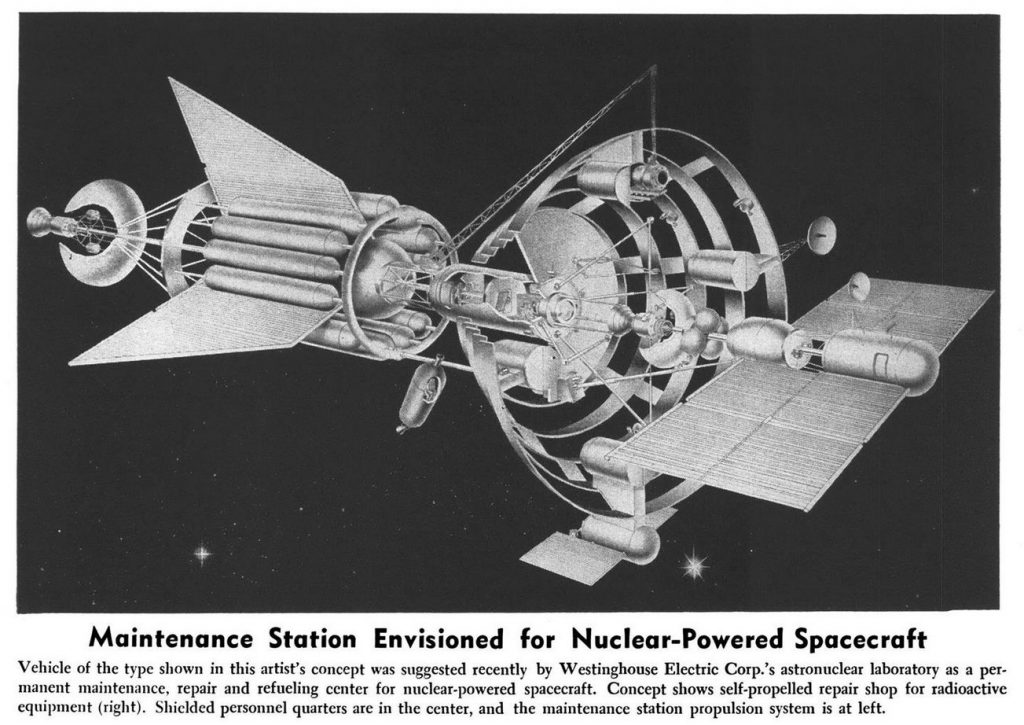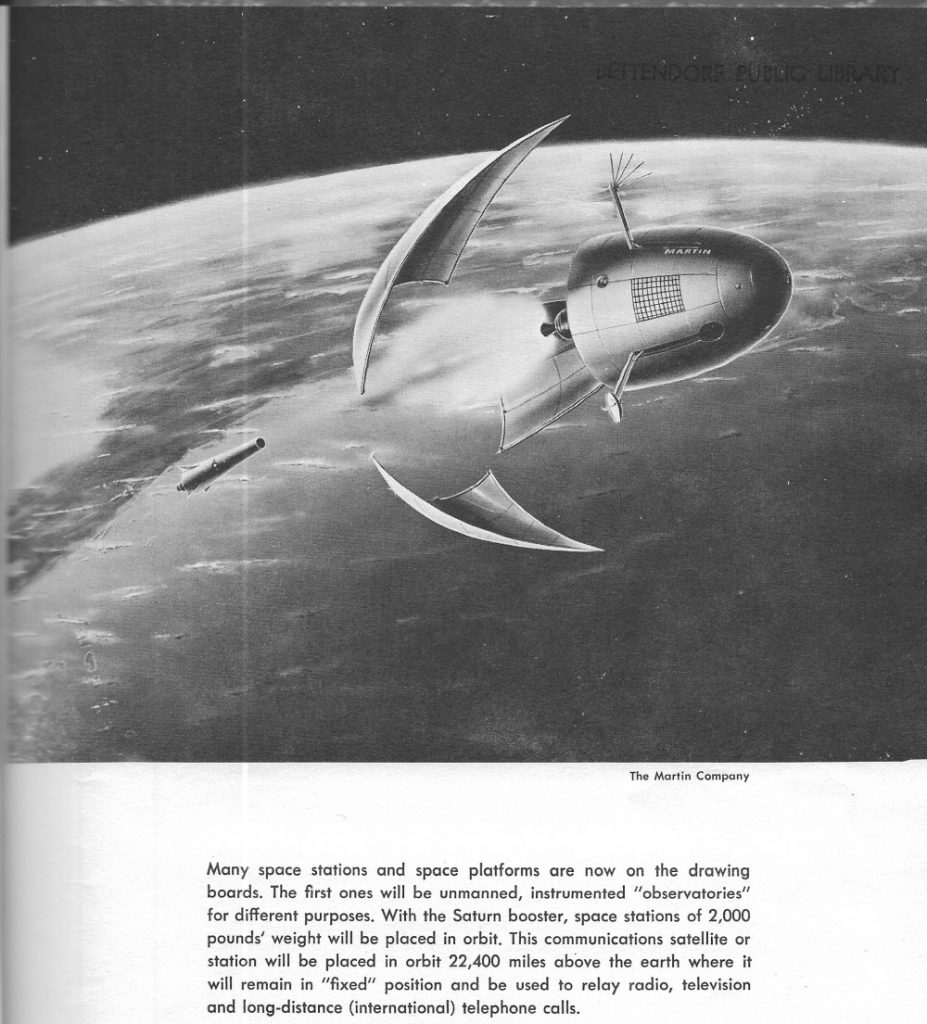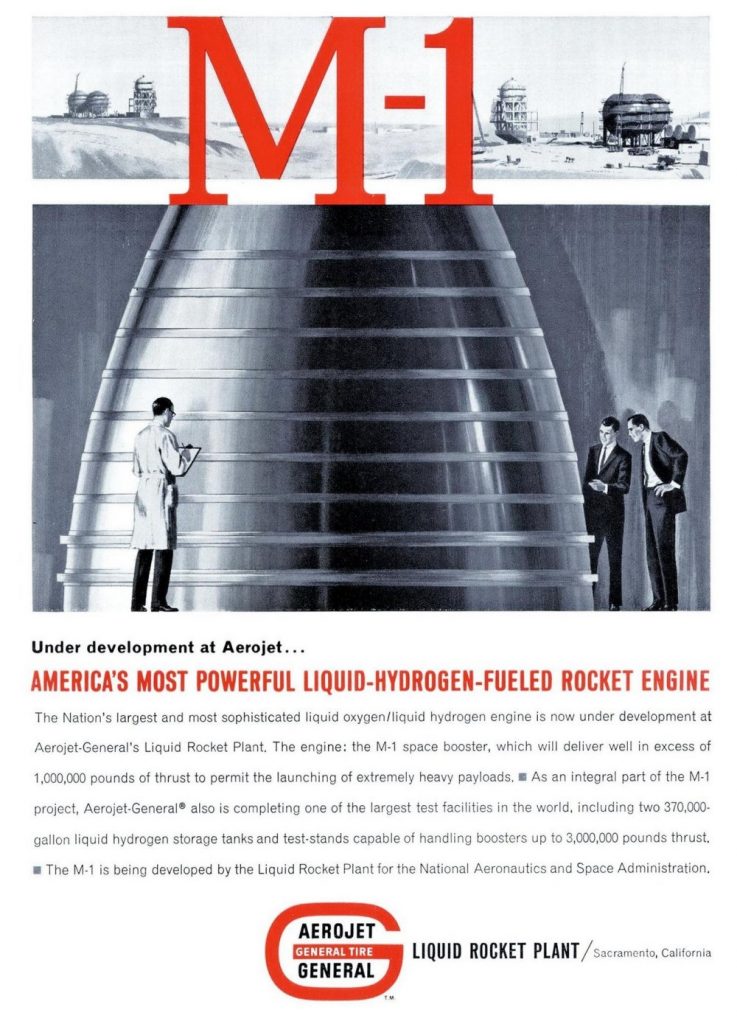A Rockwell International ad from 1984. It shows a number of Rockwell/North American Aviation products from the past, with a Space Station shown as the future. Interesting to note that the space station we actually got was the *International* space station, not the Rah-Rah-America-Is-Number-One station.
Rocket part found on Outer Banks beach belongs to Elon Musk’s SpaceX, park confirms
Looks like a storm surge from Hurricane Michael stirred up some junk on the sea floor and pushed it ashore. This 10X6-foot chunk has been confirmed to be from a SpaceX rocket, but the article doesn’t say which launch. A previous bit of a SpaceX rocket to wash ashore in the region came from a nose cone, so this may well also be part of a jettisoned and expended payload fairing, rather than a sploded rocket.
Elon Musk pegs SpaceX BFR program at $5B as NASA’s rocket booster nears $5B in cost overruns
Chances are good that the SLS first launch, currently officially slated to slip to June 2020, will probably actually slip to 2021 some time. More good news: it’s fantastically over budget.
In other words, compared to Boeing’s first serious 2014 contract for the SLS Core Stages – $4.2B to complete Core Stages 1 and 2 and launch EM-1 in Nov. 2017 – the company will ultimately end up 215% over-budget ($4.2B to $8.9B) and ~40 months behind schedule (42 months to 80+ months from contract award to completion).
Ye gods.
By the time SLS actually flies, chances are pretty good that BFR will have already gone to orbit, if not the Moon or Mars. The upper stage is slated to fly in some form in 2019; and while I won’t be the slightest bit surprised if BFRs schedule slips, I’d be beyond astonished if it slips anything like SLS’s. For a company like Boeing, the SLS core should have been a snap. The engines are decades old designs, the core tankage is based on the ET, which is decades old; they’re not recovering it, it’s literally nothing special or new. It should have *easily* flown by now.
The video of the recent Soyuz in-flight failure has been tinkered with here. Some digital trickery to make things a *bit* clearer, but the original imagery is still limited due to looking up many miles into the sky.
A piece of art from 1962 depicting a Westinghouse Electric Corp. concept for a space station meant to provide servicing for nuclear powered spacecraft. it appears to be more of a space craft than a space station, since it is equipped with a substantial nuclear propulsion system of its own. It’s unclear what the set of rings at the “front” of the space station are meant to do.
An illustration from circa 1960 showing the launch of a communications satellite. Note the booster falling away in the background… unlike pretty much every booster the US actually built, this one is a slim cone. The caption very likely does not accurately describe this; it is unlikely to be a geosynchronous satellite given not only the low altitude depicted but also the fins on the booster stage.
Soyuz Rocket Launch Failure Forces Emergency Landing for US-Russian Space Station Crew
The Soyuz booster is quite reliable, but space launch is a necessarily sporty endeavor. So it’s unfortunate bu not terribly surprising that something went wrong with todays launch. Fortunately the launch abort and recovery systems worked and the crew were safely landed. The incident occurs at about 2:45 in the video below; not clear what happened, looks like perhaps a strap-on booster underwent a flawed separation. Perhaps it impacted the core.
While I remain a fan of the Space BFR in principle, incidents like this do give me a bit of pause. In the event of a booster failure, a Soyuz/Apollo-type of system (even an SLS/Orion-type system) stands a good chance of safely separating the crew capsule, because the crew capsule is a small, dense, easily-boosted nugget. With the BFR, if something goes unintentionally energetic with the booster, accelerating the whole manned interplanetary transporter stage away fast enough would be… well, damned impressive. The answer, of course, is to make the whole BFR system so reliable that separating the passengers in the event of an emergency would seem as silly as separating the passengers from a jetliner in the event a wing fell off in flight. Given the sheer power and energy involved with space launch, that’s *always* going to be more dangerous than airliners, so the level of acceptable risk for space travelers will always have to be higher than it is for air travelers.
Additional thought: with space launch, no matter how diligent you are, things can just go wrong. But with holes being drilled into capsule and patched up with spackle by either malicious or delinquent workers, the suspicion that someone did something intentional to this booster will be inevitable.
The Aerojet M-1 rocket engine was to be a beast of an engine. Bigger than the F-1 with almost as much thrust, it differed in being fueled with hydrogen. Its intended role was to power post-Saturn “Nova” type rockets. It got as far as testing major components, but no complete engine was ever test fired. The need for such an engine went hand-in-hand with the development of very large boosters; the M-1 could have been used for either first stage or upper stages, but no booster sizable enough for such an engine survived the mid-sixties, so the M-1 died away.
SpaceX launched a Falcon 9 from Vandenberg last night and landed the first stage back there again. The video is on the one hand just more of the same; on the other hand, the launch was at night, so there are some interesting sights with vapor plumes and such at high altitude that you normally can’t see with daytime launches. And while the landing was successful, as you can see from the last seconds of the video (and in the thumbnail image below), it wasn’t *perfect.* Looks like one of the landing legs came this close to buckling. I don’t know if it’s because the stage came in at a harsh angle (hard to see in the dark), or if the oleo struts on one leg were a little weak. In either case the landing was a success, but SpaceX is definitely going to want to take a look at that.
Hmmm…
Look at this mysterious object that washed ashore on Seabrook Island today! What do you think it is?
Posted by Lowcountry Marine Mammal Network on Thursday, October 4, 2018
Looks reasonably sizable. What looks like concrete is said to be a soft foam-like material, presumably an insulation of some kind…. but then since this was found in the sea, perhaps it’s a flotation material. It does somewhat look like the throat of a solid propellant rocket nozzle embedded within the foam, but I can’t immediately place what sort of rocket would put a relatively thin metal and/or fiber throat within a fat mass of low density foam like this. But it does have that burnt look that comes from either re-entry or combustion…



